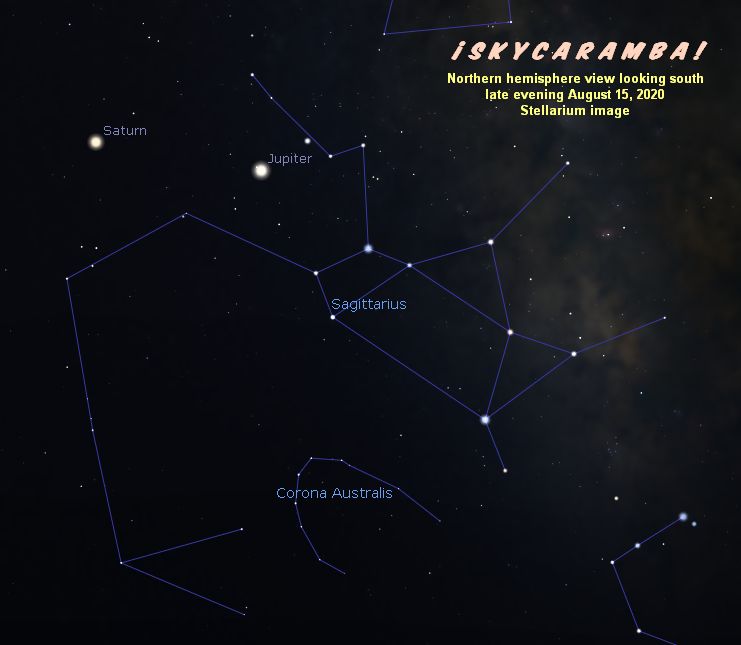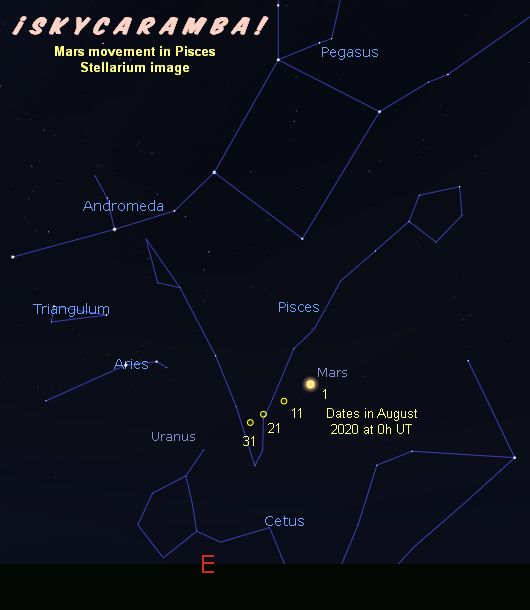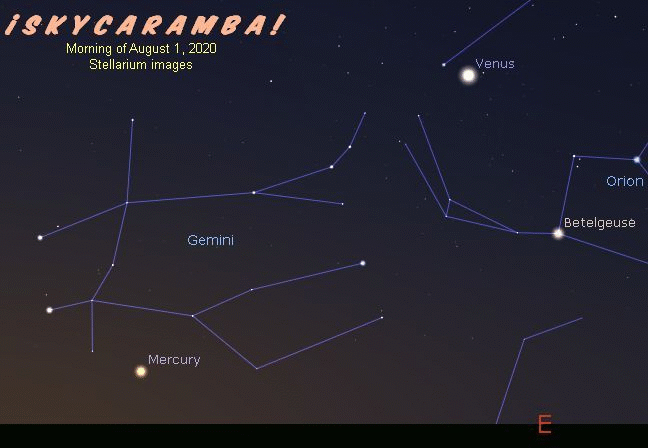As this month begins, if you can see Comet C/2020 F3 (NEOWISE), it will be in the west after sunset. You’ll need binoculars or a telescope. Say goodbye to this visitor which will not be back our way for approximately another 7,000 years. Never forget the wonder it brought to this summer’s already exciting night sky watching.

The comet is in Coma Berenices the first week of August. It will move below Boötes and into Virgo during the month. Leo is setting as evening begins too. Scorpius, Ophiuchus, and Hercules are among the constellations on the meridian as night begins. Look for Sagittarius rising with Jupiter and Saturn next to it. The nearly full moon is with them on the first night of the month. The two planets don’t move much from those spots this month. The moon rejoins them on the 28th and 29th. Capricornus and Aquila are also rising at sunset.

Mars rises next to Pisces by late evening. A waning gibbous moon passes by the red planet on the 9th. All month, the planet is moving eastward along and then toward the southern fish. It crosses into the space between the fish on the 19th. At the end of the month, Mars is snugly between them. Below them is Cetus, rising around midnight.

Venus is an early morning riser below the Hyades. The planet provides an excellent opportunity this month to witness the dynamics of motion within the solar system. At the same time every morning, it will appear to be at nearly the same elevation and azimuth while the constellations behind it have risen a little more. It starts at the edge of Taurus above Orion’s head. From the 5th through the 10th, Venus moves across the hand on the hunter’s raised arm and then into the feet of Gemini. A waning crescent moon visits on the 15th when the planet is next to the star Nucatai. At month’s end, Venus is moving out of Gemini and toward Cancer.
Venus seems to almost hover in place because it is approaching greatest elongation near the middle of the month. On the 12th, it is 45.8° west of the sun.
That end-of-month position for Venus is about where Mercury is when August starts. Mercury reaches Cancer by the 8th, but it lost in the light of sunrise by then too. The messenger planet is emerging into the evening sky by the time the month ends, but is still hard to see.
Moon phases this month:
Full on the 3rd. Last quarter on the 11th. New on the 19th. First quarter on the 25th.
Orbital positions for the moon in August:
Southern lunistice on the 1st. On the equator going north on the 8th. Northern lunistice on the 15th. On the equator going south on the 22nd. Southern lunistice on the 28th.
The moon is at apogee on the 9th. It is 404,700 km or 251,400 mi from Earth, center-to-center.
The moon is at perigee on the 21st. It is 363,500 km or 225,900 mi from Earth.
Notable conjunctions this month:
1st – Jupiter and the moon 1.5d.
2nd – Saturn and the moon 2.3d.
6th – Neptune and the moon 4.0d.
9th – Mars and the moon 0.7d.
10th – Uranus and the moon 3.3d.
13th – Moon and Aldebaran 3.9d.
15th – Venus and the moon 4.0d.
16th – Moon and Pollux 4.4d.
17th – Mercury at superior conjunction 1.8d. from the sun
23rd – Moon and Spica 6.5d.
29th – Jupiter and the moon 1.4d. and later Saturn and the moon 2.2d.
Orbital positions of the planets:
Mars is at perihelion on the 3rd. The red planet is 1.381 astronomical units from the sun.
Mercury is at perihelion on the 6th. It is 0.307 astronomical units from the sun.
The moon occults Mars on the 9th. The event is visible from parts of South America, the southeast Pacific ocean, and Antarctica.
